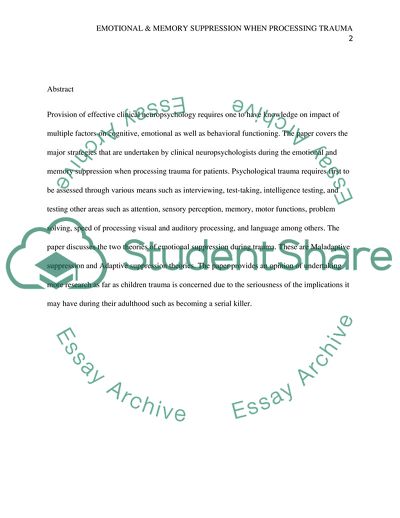Cite this document
(Emotional and Memory Suppression When Processing Trauma Coursework Example | Topics and Well Written Essays - 2250 words, n.d.)
Emotional and Memory Suppression When Processing Trauma Coursework Example | Topics and Well Written Essays - 2250 words. https://studentshare.org/psychology/1844357-emotional-and-memory-suppression-when-processing-trauma
Emotional and Memory Suppression When Processing Trauma Coursework Example | Topics and Well Written Essays - 2250 words. https://studentshare.org/psychology/1844357-emotional-and-memory-suppression-when-processing-trauma
(Emotional and Memory Suppression When Processing Trauma Coursework Example | Topics and Well Written Essays - 2250 Words)
Emotional and Memory Suppression When Processing Trauma Coursework Example | Topics and Well Written Essays - 2250 Words. https://studentshare.org/psychology/1844357-emotional-and-memory-suppression-when-processing-trauma.
Emotional and Memory Suppression When Processing Trauma Coursework Example | Topics and Well Written Essays - 2250 Words. https://studentshare.org/psychology/1844357-emotional-and-memory-suppression-when-processing-trauma.
“Emotional and Memory Suppression When Processing Trauma Coursework Example | Topics and Well Written Essays - 2250 Words”. https://studentshare.org/psychology/1844357-emotional-and-memory-suppression-when-processing-trauma.


